Chapter 3 - Environmental Management and Performance
(A) Providing Aesthetically Pleasing Open Space and Promoting Greening and Horticulture
| 3.1 |
In providing aesthetically pleasing open space and promoting greening and horticulture, we have five areas of work. They are –
- Provision of open spaces that are aesthetically pleasing;
- Beautification of existing landscape areas;
- Planting programme;
- Education and promotion on environmental protection; and
- Greening activities.
|
(I) Provision of Open Spaces that are Aesthetically Pleasing
| 3.2 |
In 2020, 11 new open space projects (including capital works projects and minor works projects) were completed, resulting in an increase of about 2.879 hectares of open space in Hong Kong. A list of these new projects is shown at Annex I. |
| 3.3 |
In general, 70% of the passive recreation areas will be used as landscape area. Conspicuous flowering and shade trees, colour foliage and flowering shrubs of hardy species will be chosen to create colour contrast and seasonal changes. We aim to achieve sustainable landscape through selection of more low maintenance and native plant species. |
| 3.4 |
When planning new open space projects, the facility will be designed and constructed with consideration to environmental performance, such as application of energy-saving building services installations and use of environmental-friendly materials such as products with high recycled content. Appropriate materials should be used to create an user-friendly, comfortable environment and to achieve low recurrent maintenance cost. Apart from new open space projects, there are on-going improvement and upgrading works to existing parks and playgrounds.
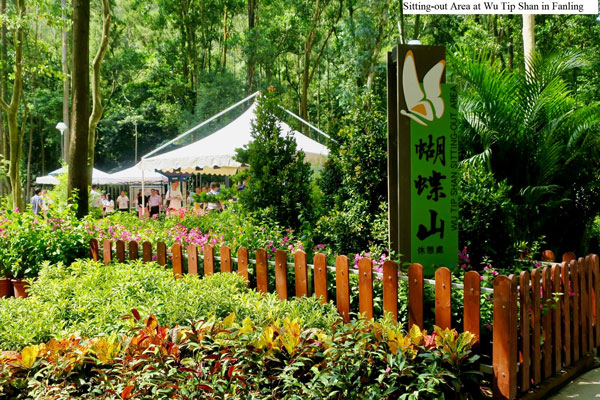 |
(II) Beautification of Existing Landscape Areas
| 3.5 |
In 2020, about 21 hectares of existing landscaped areas (including roadside amenity areas) were upgraded through the effort of district staff in carrying out landscape improvement works. We would continue to enhance the landscaping of parks and roadside amenity areas in order to provide a pleasant environment to the public.
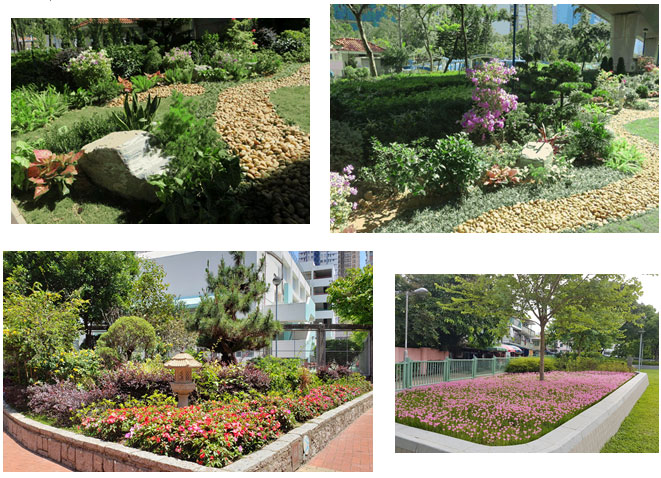 |
(III) Planting Programme
| 3.6 |
Around 2.78 million trees, shrubs and annuals were planted in 2020 (breakdown at Annex II). We continued the planting of flowering species to enhance the visual impact with more seasonal colours.
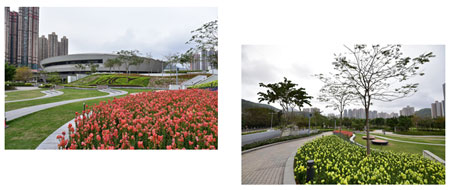 |
(IV) Education and Promotion on Environmental Protection
| 3.7 |
(a) Horticulture Courses for the General Public
Due to the COVID-19 pandemic, most of the horticulture courses were cancelled. We conducted 24 horticulture courses for 240 participants in 2020. |
| 3.8 |
(b) Guided Visits for Schools and Non-governmental Organisations (NGOs)
A total of 86 guided visits for 2 447 participants from schools and NGOs were organised in 2020, which included 75 school guided visits for 2 120 school children at the Hong Kong Zoological & Botanical Gardens, Green Education and Resource Centre, Kowloon Park, Hong Kong Park, Tai Po Waterfront Park, and Tuen Mun Park. The guided visit was designed having regard to the curriculum on environmental education for primary schools. Nine visits were also arranged for 294 children from kindergartens to tour around Kowloon Park and Hong Kong Park. Children were introduced the basic knowledge and concept of plants, environmental conservation and appropriate manners for visiting parks. Besides, free guided visits were arranged for 33 participants from two NGOs to tour around the Green Education and Resource Centre at Kowloon Park.
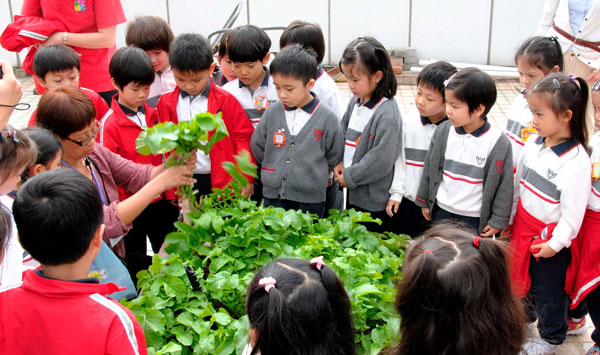
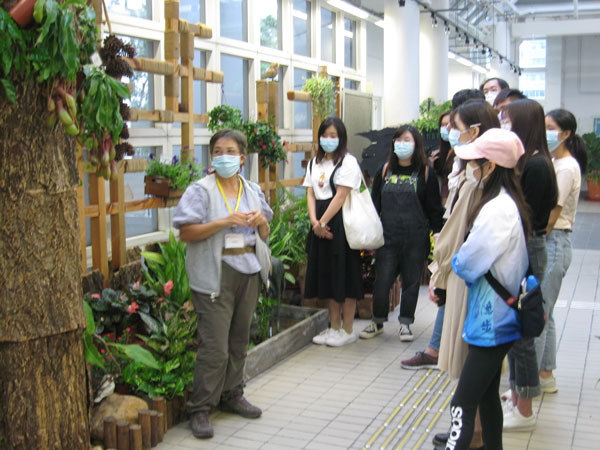
|
(c) Conservation Courses for Uniformed Groups
| 3.9 |
The programmes provided a wide range of courses in gardening and arboriculture and aimed at promoting nature conservation. Due to the COVID-19 pandemic, the programmes were cancelled in 2020. |
(d) Seminar and Gallery on Environmental Protection
| 3.10 |
To arouse public awareness on environmental issues, the Hong Kong Science Museum staged exhibition and organised various programmes, including –
- public lectures on environmental issues, renewable energy and green technology in the series of “Science in the Public Service” from August to November 2020. A lecture on “Extreme Weather in the Era of Climate Change” in the series of “The Joseph Needham Foundation for Science and Civilisation Public Lectures on STEM Education” was organised for schools in October 2020;
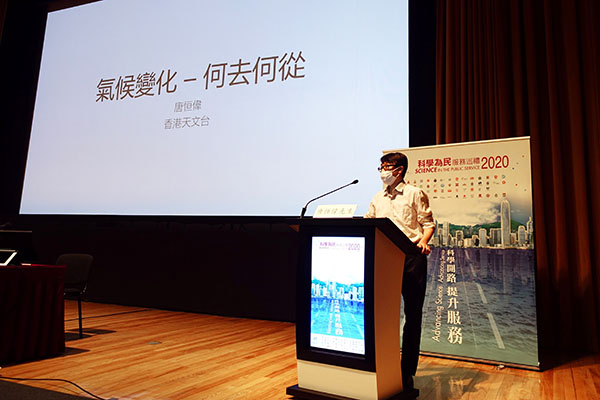
- opening of a new Earth Science Gallery that introduces the impact of human’s actions on the environment, as well as the various methods of studying climate change; and
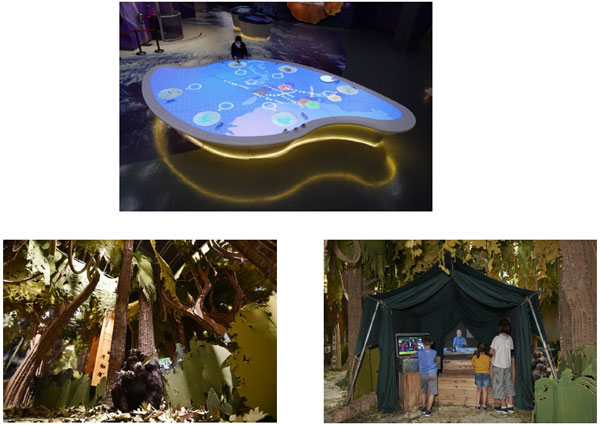
- The Hong Kong Space Museum, in collaboration with the Department of Physics of the University of Hong Kong (HKU), has been conducting the research project “Hong Kong Night Sky Brightness Monitoring Network” on light pollution since September 2010. Funded by the Environment and Conservation Fund initially, the project aims at carrying out a comprehensive monitoring of the condition of light pollution in Hong Kong by studying the night sky brightness at about 18 urban and rural locations, including the Hong Kong Space Museum, iObservatory and Astropark. The Hong Kong Space Museum has continued to collaborate with HKU via the research project “Globe at Night – Sky Brightness Monitoring Network”, which is the overseas extension of the previous project, since July 2017. In addition, the Hong Kong Space Museum organised various activities, including public seminars, student competitions and exhibitions to spread the message of light pollution reduction further and wider.
|
(V) Greening Activities
| 3.11 |
The Department continuously promotes a green culture in the community through a series of educational and community involvement programmes. A total of 2 448 greening activities were organised for the year of 2020, including – |
(a) Hong Kong Flower Show
| 3.12 |
The Hong Kong Flower Show 2020, originally scheduled to be held at Victoria Park from 6 to 15 March, was cancelled due to the COVID-19 pandemic.
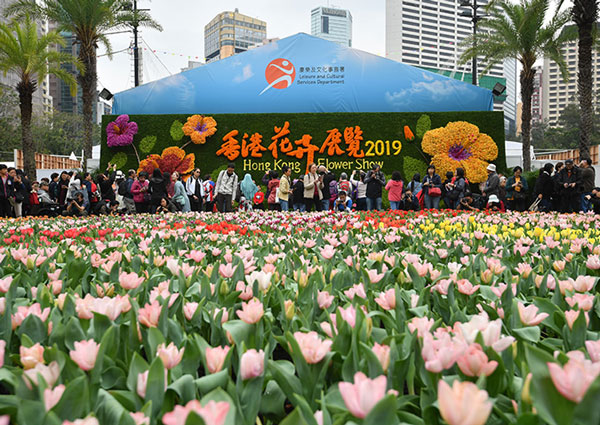
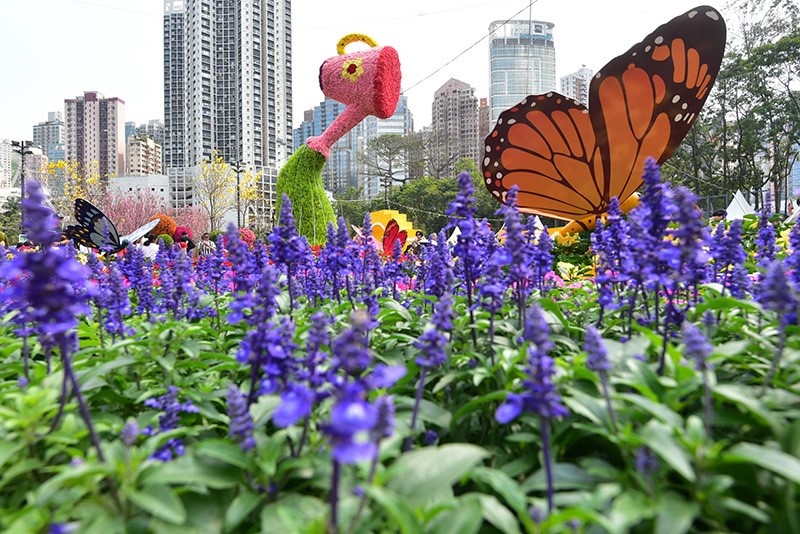
|
(b) Community Planting Day
| 3.13 |
The Department organised Community Planting Days throughout the year to promote public awareness in greening. A total of three events were organised in 2020 with about 650 participants planting over 5 400 trees and shrubs.
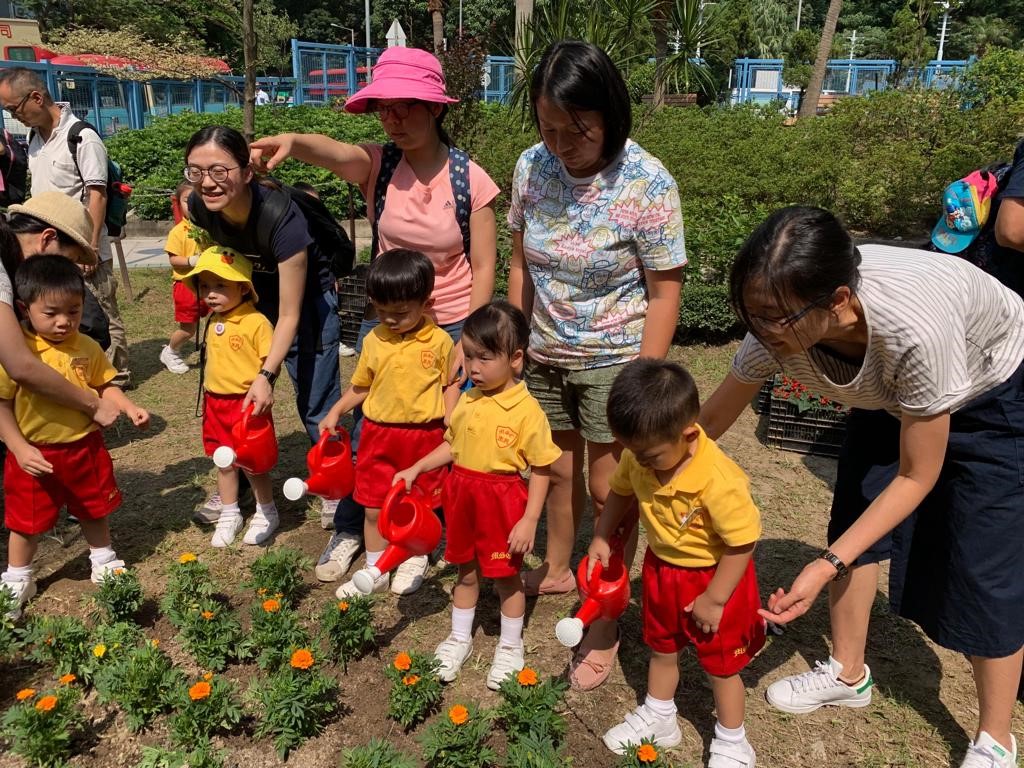
|
(c) Green Volunteer Scheme
| 3.14 |
Green Volunteers were recruited in 18 Districts to serve as stewards in greening promotion activities, and to assist in tree surveillance work and report problematic trees. They were encouraged to participate in greening their neighbourhood. In 2020, around 130 greening activities were organised for the Green Volunteers with an attendance of about 1 110.
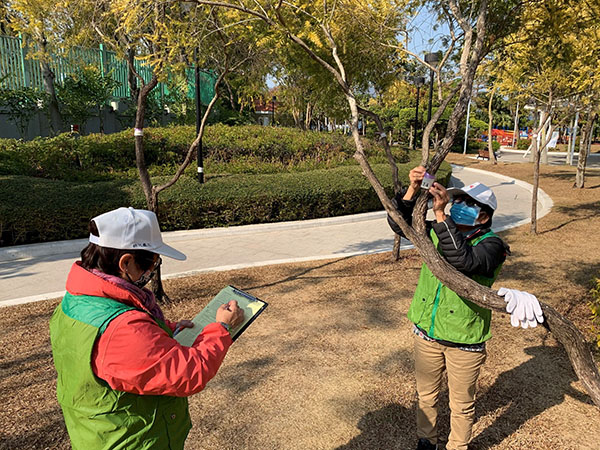
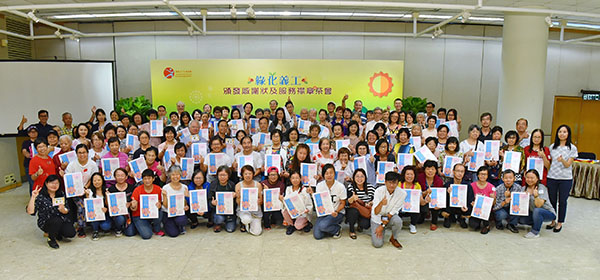
|
(d) Greening School Subsidy Scheme
| 3.15 |
In 2020, the Scheme attracted the participation of 890 schools and kindergartens for organising greening activities and implementing planting projects in their campuses with technical advice from horticultural instructors. |
(e) “One Person, One Flower” Scheme
| 3.16 |
The Scheme aimed at enhancing the knowledge of students about plants and cultivating their interests in growing them. In 2020, about 380 000 seedlings were distributed for students to nurture at home or in school.
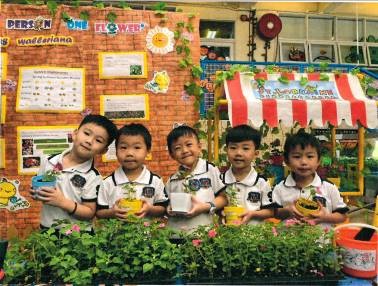 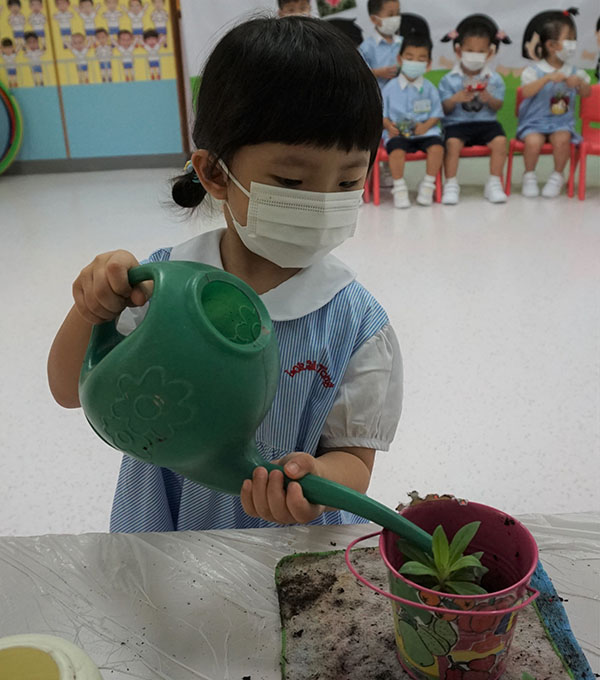
|
(f) Greening Hong Kong Activities Subsidy Scheme
| 3.17 |
The Scheme aimed at encouraging the local community to organise more greening activities. Two organisations were subsidised under this Scheme in 2020 to organise greening activities.
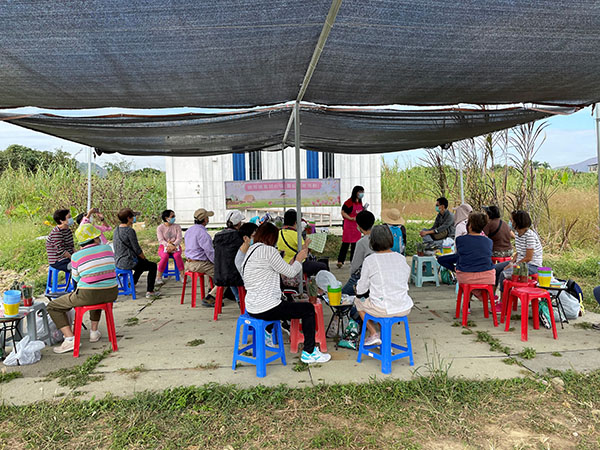
|
(g) Greening Exhibitions and Talks
| 3.18 |
Greening exhibitions and talks on horticulture were organised at the Green Education and Resource Centre at Kowloon Park in 2020 with a view to educating and arousing public awareness in greening. A total of 73 exhibitions and talks were organised with about 1 600 participants. |
(h) Community Garden Programme
| 3.19 |
To encourage the public to participate actively in greening activities at the neighbourhood level and to adopt greening activities as part of daily life, 75 gardening courses were organised in 2020 with about 6 050 participants. |
(i) Outreaching Greening Promotional Activities
| 3.20 |
To promote greening and enhance public awareness in greening and environmental protection, 71 outreaching greening activities were delivered to organisations and schools for about 25 680 participants in 2020. |
(B) Preserving Cultural Heritage
| 3.21 |
The Department, through the Conservation Office (CO), is committed to preserving all forms of Hong Kong’s cultural heritage. The CO provides conservation support for thematic exhibitions and preservation care and treatment for all collections pertaining to the public museums, Art Promotion Office and Intangible Cultural Heritage Office. |
| 3.22 |
The CO devises, implements and evaluates conservation programmes for museum artifacts and heritage objects. Over the year, there were 376 objects and collections with various degree of deterioration treated and protected by the CO’s professional conservators.
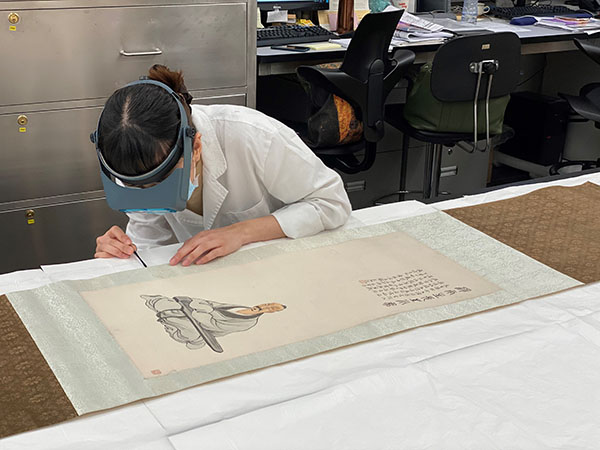 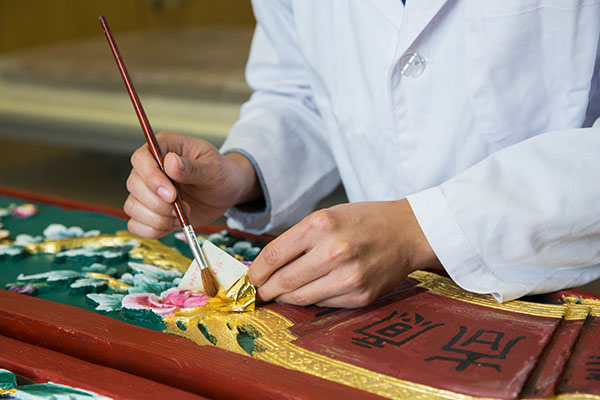 |
| 3.23 |
Besides, the CO conducts technical examination and scientific studies on cultural heritage to support conservation work. In 2020, several research projects, ongoing and new were conducted by experienced conservators, including material studies of the ivory-like caps mounted on a bamboo incense holder. By using various techniques ranging from visual inspection, ultraviolet illumination, microscopic examination to Raman spectroscopy, it was identified that the caps of the bamboo incense holder were made of elephant ivory which requires specialised conservation care for their well-being in the long term.
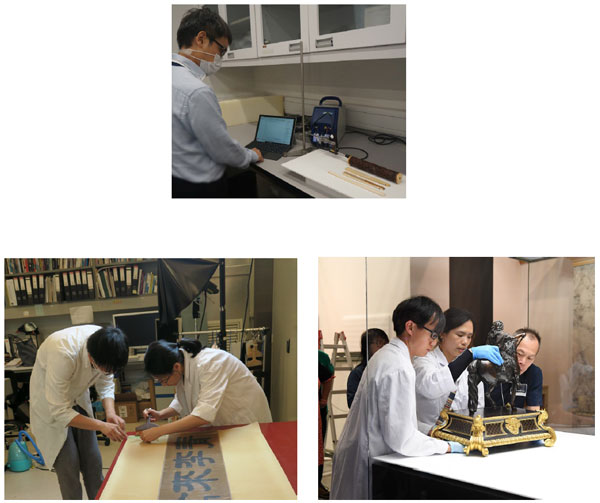 |
| 3.24 |
The CO is dedicated to raising the awareness and support for conservation at all levels of the community by organising educational programmes and extension activities. There were two sessions of educational workshops conducted in January 2020 to promote museum conservation. In support of the exhibition “The Hong Kong Jockey Club Series: Unlocking the Secrets – The Science of Conservation at The Palace Museum” organised by the Hong Kong Science Museum, the CO contributed information such as analytical techniques applied in artefact conservation, principles in conservation science and related case studies, etc. for display to raise visitors’ awareness of conservation.
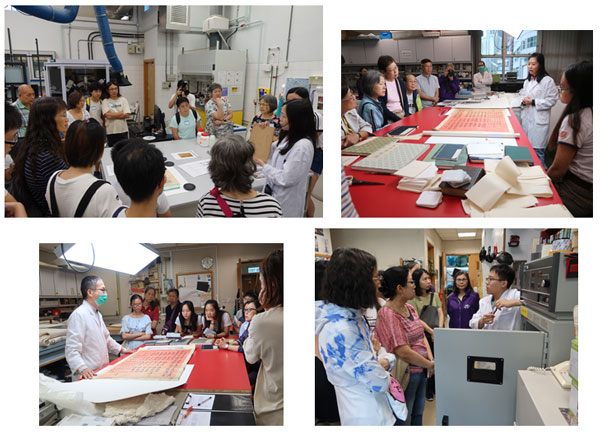
|
| 3.25 |
It is firmly believed that cultural heritage not only provides an essential and irreplaceable link between the past, the present and the future, but is also fundamental to the sustainable development of our community as it forms the basic point of reference for our cultural identity, traditions and collective memory. |
| 3.26 |
To ensure the continuous survival and well-being of cultural heritage, conservation, as well as community’s active engagement, are indispensable. |
(C) Practising Waste Reduction and Energy Saving
| 3.27 |
We proactively explore ways to promote paper saving, energy saving and waste reduction, including conducting energy audits to identify good energy management practices. Measures/housekeeping practices adopted are shown in the ensuing paragraphs. |
(I) Paper Saving
| 3.28 |
The Department continued to adopt good practices on paper saving using “Reduce, Reuse, Recycle” strategy, particularly in replacing paper-based correspondences with electronic means. In 2020, we made the following endeavours –
- we provided an electronic newspaper clipping service to the Department’s Lotus Notes users to ensure that the number of hard copies is kept at a minimum;
- we produced e-versions of the departmental yearbook and departmental Christmas cards only;
- library users were given the option to receive some library notices through e-mail or library mobile app on smart phones to economise on the use of paper. As at 31 December 2020, over 497 000 registered borrowers have opted for the e-mail notification, while over 567 000 times of download of library mobile app was recorded. In addition, 426 133 kg of unserviceable library materials were recycled in 2020;
- museums and Hong Kong Film Archive, Hong Kong Visual Arts Centre and Oil Street Art Space also reduced waste by recycling exhibition materials and placed collection boxes for collecting used guide maps/pamphlets disposed of by patrons after their visits for recycling purpose;
- performance venues and programming offices used electronic means to publicise performing arts programmes and collect feedback. Admission letters to schools rather than individual URBTIX tickets were issued for student group admission of performances. Printing of flyers and house programmes was reduced by tightly monitoring distribution and minimising the pages printed. In addition, unused copies of flyers and house programmes were recycled and electronic version of publicity materials like posters and house programmes were further adopted as far as possible;
- most of the performance venues and some of the museums, such as Hong Kong Science Museum and Hong Kong Space Museum, etc. also installed digital screen/electronic monitors to replace conventional foam boards or paper posters for programme promotion; and
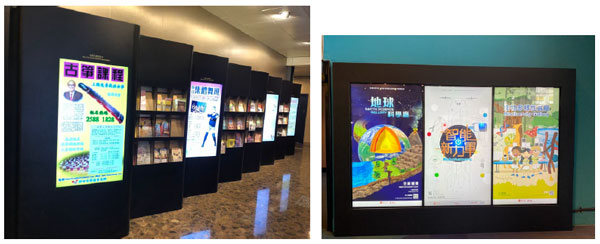
- in line with the Government’s initiative of paper saving, the tenders and quotations issued by the Headquarters Supplies Section were made in electronic format (i.e. by means of CD-rom) and suppliers were encouraged to adopt environmental-friendly measures in the preparation of tender/quotation documents (such as using recycled paper) and to minimise the use of packaging materials. Besides, about 77% of the paper we consumed in 2020 was recycled paper.
|
(II) Energy Saving
| 3.29 |
The Government has set a new “Green Energy Target” which seeks to further improve its use of energy by 6% for the period between 2020-21 and 2024-25. We will play an active role to achieve the set goal and strive to integrate green features in our buildings/venues and adopt green practices as far as practicable. |
(a) Change in Energy Consumption
| 3.30 |
The energy consumption of government buildings/venues under LCSD in FY 2020-21 was 364.7 million kilowatt hour (kWh), which shows a significant decrease from the energy consumption recorded in FY 2019-20 (i.e. 424.7 million kWh). The decrease was mainly due to our implementation of various practicable housekeeping measures and best practices for energy saving as discussed in paragraphs 3.32 to 3.34 below. |
| 3.31 |
The change in energy consumption has factored in significant changes in opening/closure of venues/facilities, addition/reduction of services, addition/removal of plants/equipment, extended/shortened service hours, increased/decreased demand for services, change of chairmanship of Building Management Committee1 , etc. for a like-to-like comparison. |
| 1 |
The energy consumption of a Municipal Services Building is counted towards the department holding the Building Management Committee chairmanship. |
|
(b) Housekeeping Measures for Energy Saving
| 3.32 |
The following housekeeping measures for energy saving were commonly adopted in the Department’s offices and venues (including leisure venues, performance venues, libraries and museums) in 2020 –
- maintaining the 25.5°C office room temperature target set by the Government for the summer months in general. At places such as museums, libraries, sports centres and performance venues where we could not strictly maintain this temperature due to operational reasons and/or customer service considerations, we worked closely with the Electrical and Mechanical Services Department (EMSD) to keep the temperature as close to 25.5°C as practicable;
- switching off air-conditioners in facilities/meeting rooms which have separate air-conditioning control right after use and reducing cooling for premises with central air-conditioning control when occupancy is low (such as on weekends, lunch time or after office hours);
- using high-efficiency lighting systems (fluorescent tubes with electronic ballasts, motion/occupancy sensors and optical fibres) and energy-efficient lamps such as T5 and LED lighting to achieve energy saving as far as possible. For example, 62 sets of T8 fluorescent light of the Space Theatre of the Hong Kong Space Museum were replaced by LED lighting to achieve energy saving during its renovation starting from May 2020 to June 2021;
- rationalising the numbers of fluorescent lamps and operating hours of offices/venues lightings as appropriate to reduce electricity consumption;
- maintaining only those lighting which are essential for safety, security or other specific purposes in areas that are infrequently occupied and switching off the lights for facilities without booking or left idle;
- suspending external lightings used for decorative, promotional or advertising purposes from 11 pm to 7 am daily except for those decorative lightings that are required to cater for some special festive occasions such as Christmas, New Year and Lunar New Year;
- separating the lighting/air-conditioning controls in different areas/zones of venues so that the lighting/air-conditioning system could be tuned or switched on as necessary to save energy;
- save for operational needs and safety/security reasons, switching off external lighting installation of some venues all year round;
- shortening the operation hours of water features where applicable; and
- installing speed control/passenger sensors for escalators or reducing their operation time as deemed appropriate.
|
| 3.33 |
Apart from the above commonly adopted housekeeping measures, some venues also implemented other practicable measures that could address their operational characteristics or specific environment for energy saving –
- using photovoltaic lighting systems in Hong Kong Science Museum, Hong Kong Museum of Art, Ko Shan Theatre New Wing, Yau Ma Tei Theatre, Tiu Keng Leng Public Library, Kwai Tsing Theatre, Tsuen Wan Town Hall, Tuen Mun Town Hall and Ngau Chi Wan Civic Centre to promote the energy-saving concept by converting solar energy directly into electricity;
- installing solar energy lights in Hong Kong Park, Quarry Bay Park, Waterfall Bay Park, Victoria Park, Kowloon Park, Fa Hui Park, Kai Tak Runway Park, Jordan Valley Park, Morse Park, Po Kong Village Road Park, Tung Chung North Park, Tsing Yi Northeast Park, Sha Tin Park, Tai Po Waterfront Park, Po Tsui Park, North District Park, Tuen Mun Riverside Park, Wu Shan Riverside Park and Tin Shui Wai Park to promote adoption of renewable energy technologies;
- installing passenger sensors for lighting at lift lobbies at different levels in Hong Kong Visual Arts Centre to reduce their operation time;
- adjusting the timer lighting schedule to fit seasonal need and installing astronomical time switches to the lighting in some parks, playgrounds and performance venues so that the lighting would be switched on/off according to astronomical time of sunset and sunrise to save energy. Besides, remote control devices were installed in some parks to switch on/off park lights by mobile phone during inclement weather;
- using photocell control in some leisure and performance venues to automatically control the light in response to the intensity of the natural light;
- turning off the air-conditioning system in the main foyer half an hour or one hour before the close of the performance venues when there was no performance/activity in the venues;
- for public libraries, solar control films or blinds for windows were installed as appropriate to reduce sun heat, some decorative lights were switched off, computer monitors and multimedia players at all Multimedia Information System workstations were switched off after closure of libraries;
- installing motion sensor lights at staircases in Hong Kong Heritage Museum to achieve more effective use of lighting and save energy; and
- installing new glass facades and skylights which are fitted with high-performance low-energy glazing in Hong Kong Museum of Art. Equipped with the green properties of good insulation, low reflection and high transmittance, internal heat gain is effectively reduced which results in lower electricity consumption for air-conditioning.
|
| 3.34 |
At the Headquarters building, the following practicable measures were also implemented –
- using solar control window films at all windows of the building;
- using occupancy sensors to control the on/off of the lights;
- switching off part of the lighting at G/F entrance and lobby area;
- using timers to control the water flushing of urinals at male toilets;
- suspending the operation of lighting at the open space car park and outdoor planter boxes;
- installing carbon monoxide (CO) and nitrogen dioxide (NO2) sensors to control the speed of ventilation fan at the basement car park;
- using separate electricity meters at G/F to 17/F to monitor the electricity consumption of individual floors;
- carrying out surprise checks outside office hours to ensure that any unnecessary equipment was turned off while not in use;
- replacing the lights at the corridors near the female toilets at 1/F to 17/F with LED lights; and
- upgrading existing fluorescent tubes with LED tubes in office area by phases.
|
(III) Carbon Reduction
| 3.35 |
As part of the Government’s efforts in combating climate change, we conducted annual carbon audits for our major buildings with annual electricity consumption over 500 000 kWh so as to assess the carbon performance and identify room for emissions reduction. The carbon performance summary is available at the Department’s website. |
(IV) Water Saving
| 3.36 |
The fresh water consumption of government buildings under LCSD in 2020 were 10 million cubic meters, representing a 16.7% decrease compared with the same period in 2019. Major water conservation measures adopted are listed below –
- we exercised vigilance in the use of water by regulating outflow of water taps and replacing them with timer-taps in our offices and venues as far as possible. Any leakage of water taps were repaired as soon as possible; and
- we stepped up site inspections of irrigation systems to prevent water leakage, used spray nozzles for irrigation to reduce water loss from the soil surface, planted drought tolerant species at suitable locations and used less water for water features in major parks.
|
(V) Waste Reduction
| 3.37 |
Waste reduction and other green measures adopted are listed below –
- we promulgated on our Document Library a list of sales term contracts for waste disposal/recycling to facilitate the sale/recycling of unserviceable items;
- we used recyclable and reusable office stationery, such as rechargeable batteries, recyclable ink/toner cartridges, refillable pen shafts and greener clutch pencils, etc.;
- we promoted the use of more green products, such as food waste compost, animal waste composts, and environmental-friendly pesticide for plants, and the recycle use of yard wastes as soil conditioner for planting;
- we signed the Food Wise Charter under the Food Wise Hong Kong Campaign, disseminated information on food waste reduction to catering service contractors operating in our leisure/cultural venues, and displayed posters/publicity materials which promoted the Food Wise Charter;
- we recycled yard waste generated from horticultural maintenance works at Animal Waste Composting Plant in Ngau Tam Mei and wood shredding facility in EcoPark;
- we reminded colleagues to plant flowering shrubs instead of seasonal flowers for beautification and landscape work so as to reduce yard waste;
- we placed waste separation bins (i.e. 3-coloured, 4-in-1 bins and bottle-shaped bins) at over 760 venues, including leisure and cultural venues and the Headquarters building;
- for purchase of regulated products, we requested suppliers/manufacturers to provide the regulated products that are in compliance with the Volatile Organic Compound limit, including documentary proof in the quotation document;
- for purchase of regulated electrical equipment, suppliers are required to comply with the relevant statutory requirements and environmental legislation in execution of the contract and in any subsequent transfer/export/disposal of the trade-in items;
- we incorporated a provision in the cleansing and horticultural maintenance service contracts that contractors shall collect and sort all refuse in an environmental-friendly manner, and remove and dispose of the refuse properly in recyclable polythene bags;
- we reminded colleagues to send invitation in electronic means for organising events/meetings, not to use corsages, reduce name badges to an absolute minimum and avoid using disposable cups and disposable tableware as far as practicable;
- we reminded colleagues to help reduce the use of plastic shopping bags and avoid the distribution of reusable shopping bags (including but not limited to non-woven bags) except on a need basis in publicly funded activities;
- we placed umbrella dryers and umbrella racks at various venues, and all leisure and cultural venues ceased to distribute plastic umbrella bags on rainy days;
- we promoted “Bring Your Own Bottle” culture in the community and installed 1 438 and 40 water dispensers/fountains in leisure and cultural venues respectively. We reminded colleagues to stop the distribution of plastic bottled water; and
- we conducted annual performance review to monitor the adoption of green measures and waste reduction practices by sections/offices.
|
(VI) Environmental Awareness among Staff
| 3.38 |
For raising environmental awareness and promoting waste reduction, saving energy and natural resources among staff –
- we promoted and regularly re-circulated circulars and good practices in paper saving, energy saving, waste avoidance and reduction, and improving air quality to staff and contractors. These circulars and good practices have also been uploaded onto the Department’s document library for staff’s easy reference and retrieval;
- we issued to staff green tips for offices and attending/organising events and meetings for enhancing their awareness of the green measures;
- we took part in the lights out campaign of “Earth Hour 2020” organised by the World Wide Fund for Nature on 28 March 2020; and
- we regularly reminded colleagues to choose energy-efficient products in line with the Mandatory Energy Efficiency Labelling Scheme under the Energy Efficiency (Labelling of Products) Ordinance or the Voluntary Energy Efficiency Labelling Scheme as appropriate. For procurement of the prescribed products (i.e. room air-conditioners, refrigerating appliances and compact fluorescent lamps), only those with Grade 1 energy label should be chosen.
|
(VII) Clean Air Charter
| 3.39 |
The Chief Executive signed the Clean Air Charter on behalf of the Government at the “Business for Clean Air” seminar organised by the Hong Kong General Chamber of Commerce on 27 November 2006. The Charter was initiated by the business sector in support of the Government’s appeal to improve air quality in Hong Kong. |
| 3.40 |
As at 31 December 2020, we had a fleet of 153 vehicles. The total mileage was 1 351 172 km and the fuel consumption was 302 296 litres in 2020. The related emissions were about 5 707 kg of nitrogen oxides (NOx) and 474 kg of respirable suspended particulates (RSP)2 . The total mileage and fuel consumption decreased by 20.8% and 23.7% respectively as compared with the figures recorded in 2019. Such decrease was mainly caused by the service-wide implementation of work from home arrangements to prevent the outbreak of COVID-19. At the same time, we have also implemented the following measures in support of the Government’s policy to improve air quality in Hong Kong –
- we plan to replace more conventional retired departmental vehicles with fuel efficient and low emission environmental-friendly ones continuously; and
- we regularly refresh all departmental drivers about eco driving skills and remind them of good practices in operating the vehicles for reducing emissions.
|
| 2 |
The indirect emissions from vehicle fuel are calculated according to the formulae set out in the Guide to Clean Air Charter Report Writing published by EPD in Jan 2008. |
|
| 3.41 |
For improving indoor air quality (IAQ) and providing quality services to the public, we engaged EMSD to carry out proper maintenance and retrofitting works for the ventilation and air-conditioning systems at our offices and venues. |
| 3.42 |
In support of the Government’s drive of improving IAQ, we also participated in the IAQ Certification Scheme and engaged accredited IAQ Certificate Issuing Body to carry out regular IAQ inspection for LCSD venues/facilities served by central air-conditioning systems wherever practicable. In 2020, around 217 LCSD venues/facilities had participated in the Scheme. |
(D) Minimising Air and Noise Pollution in Organising Leisure and Cultural Activities
| 3.43 |
We monitored closely the generator and machinery installed for activities to ensure that dark smoke emission would not exceed the prescribed requirement as stipulated in the relevant Regulations. |
| 3.44 |
We monitored the noise level of outdoor events and ensure that they were within the limits set in the relevant Regulations. |
| 3.45 |
Following the amendments to the Smoking (Public Health) Ordinance (Cap. 371) in 2006, statutory no smoking areas have been extended to cover all indoor workplaces and public places as well as some outdoor public places. The Department has implemented the smoking ban in these premises with effect from 1 January 2007. |
 Environmental Report 2020Leisure and Cultural Services Department
Environmental Report 2020Leisure and Cultural Services Department




















